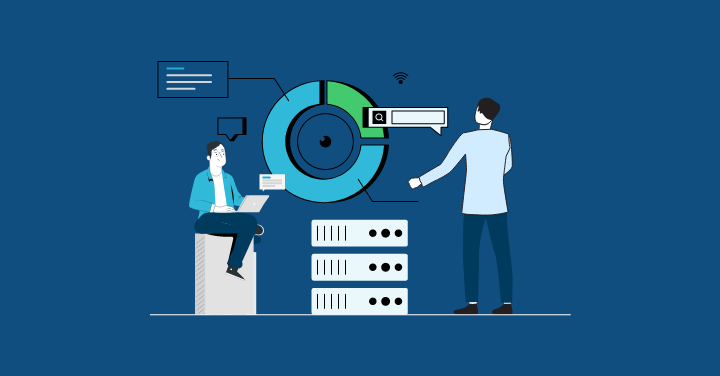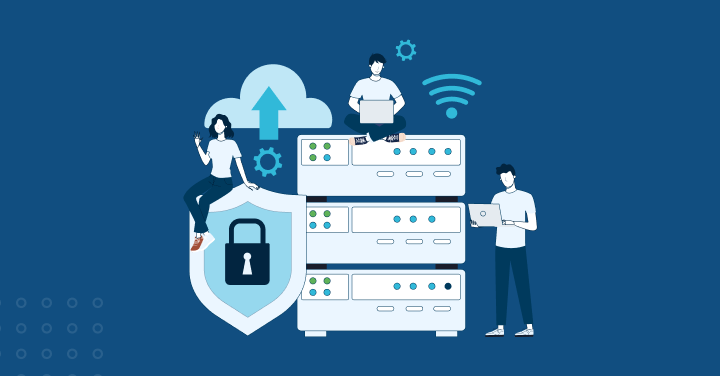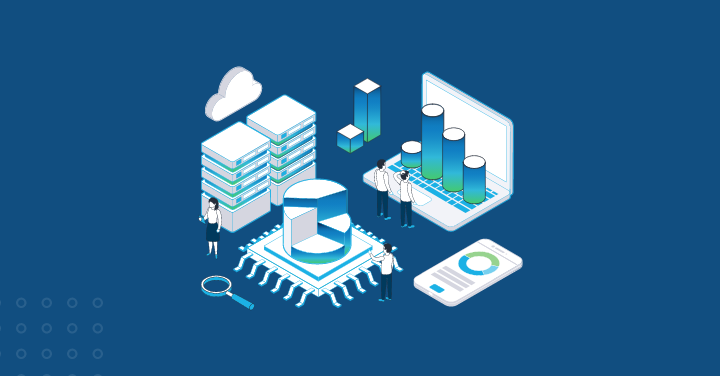The role of Exchange Server is getting more critical for business communication. If this important service goes offline, it can cause irreparable damage to the company’s brand and business.
Therefore, constant monitoring of the Exchange Server is fundamental to keep the services running without interruption.
However, this doesn’t mean nothing can happen to the Exchange Server. But, at least, you would mitigate some of the issues before they can do any major harm.
In this post, we will see why only monitoring can’t prevent Exchange Server failure and how to increase server resilience.
The Indispensable Role of Server Monitoring
Monitoring is key to identifying issues before they can do any further damage or to minimize the damage. Exchange Server monitoring involves:
- Monitoring of hardware of the server, such as CPU, RAM, disk space, etc.
- Checking the Event Viewer for any warnings or errors that could lead to serious issues.
- Monitoring the Exchange Server queues and important services.
If there is early warning for any issue, you can start working on it before the actual issue happens.
You can use the built-in tools in Exchange Server, like the Event Viewer and Performance Monitor, to monitor and troubleshoot any warnings or errors.
Why Server Monitoring can’t prevent Exchange Server Failure?
Even regular monitoring can’t prevent Exchange Server failure. Here’s why:
It is Reactive, Not Always Predictive
It is important to understand that monitoring is not a magical tool that will warn you of future issues. It will give you an indication based on historical data and what happened at a particular point in time.
When a major issue, such as storage controller failure, power failure, or network failure, occurs, you will be immediately notified by the monitoring tool. But, these come with no preventative warning.
No Control over External Factors
Active monitoring tools can inform you about issues by looking at historical data. For example, storage analysis can help you understand when you would need to increase the storage.
But this cannot help with zero-day vulnerabilities, novel attack vectors, or items that are not configured to monitor.
Other complex interdependency issues, such as Active Directory replication issues, DNS misconfiguration, Certificates, and things outside the Exchange Server will not be detected as these are outside the internal network scope.
Configuration Changes and Human Errors
Monitoring will not be able to immediately catch gradual misconfigurations and deviations from best practices before these can cause any damage. Such issues include human errors and changes by the admins that can bypass the monitoring checks.
Threshold Limitations
Most monitoring tools work with thresholds. These can either be set too high, which could miss subtle issues, or set too low which will generate a lot of alerts that could be false positives. You must also consider that an issue could take a long time to trigger the alarm.
Scope Limitations
Monitoring, in general, focuses on individual server health. Due to this, it will miss the broader ecosystem issues, such as network latency between sites, servers and storage, and third-party dependencies, like anti-spam and phishing systems.
Apart from these external metrics, you should also consider specific Exchange Server component failures that aren’t easily surfaced by generic server metrics. These include corrupted mailbox or a faulty protocol handler.
What to Do Next: Building a More Resilient Exchange Environment
Proactive Health Checks and Audits
Monitoring is an integral part of the upkeep of an Exchange Server but you must go beyond basic monitoring. You can also do the following:
- Regularly run Exchange-specific health check scripts, such as HealthChecker.ps1 and Test-ExchangeServerHealth.ps1.
- Periodic configuration reviews against Microsoft best practices and others, depending on the company’s own baselines.
- Security audits and vulnerability assessments.
- Execute penetration testing from both internal and external to get a full report on an impact of hacking or malicious attack while giving opportunity to lock down the system and fint he gaps in the security posture.
Robust Patch Management and Update Strategy
Timely installation of Exchange Cumulative Updates (CUs) and Security Updates (SUs). These should be scheduled during a maintenance window. In addition, it’s important that such patches are tested in a non-production environment.
The norm is to first install on a test environment, after a week of testing and checking that nothing is broken, the patches are pushed on the live environment.
Although there would be release notes and known issues with the patches, one cannot exclude that a small patch could break the server’s operations from an operating system point of view or the Exchange Server.
Comprehensive Disaster Recovery (DR) Plan
If something happens, you must have a contingency plan. The backups must be monitored on a daily basis.
You should consider a full documented disaster recovery test every year to ensure that if something happens, the plan will work.
You should also consider implementing Database Availability Groups (DAGs) to ensure high-availability of the server and data resilience.
The annual disaster recovery process will involve a disaster scenario where the internet connectivity, the server and the data are restored into a new setup to ensure that both the backups and disaster recovery mechanism are in place and working as these should be.
The annual exercise will improve the process which in case of a disaster, the team involved can ensure and comply with the company’s Recovery Point Objective (RPO) and Recovery Time Objective (RTO)
Deep Dive Diagnostics and Log Analysis
You should leverage the Exchange Server extensive logging capabilities, such as protocol logs, message tracking, and event logs.
You can also invest in a centralized logging solution, such as SIEM, ELK stack, etc. for correlation and trend analysis of all the events that happen within the Exchange Server and its operating system.
A SIEM system or a system logger would collect all the events which will be fired from the system and one can user analytics software such a PowerBi to create dashboarding to monitor the system and filter out the thousands of alerts that the system would have.
With the use of AI, one can tap into the raw data and also get more information and suggestions when an anomaly might be brewing on the server which would normally be unnoticed.
Capacity Planning
It is important to analyze the utilization of storage, CPU, memory, and network traffic. This would help you to decide for the future needs.
If a spike in utilization is noted for a few minutes, this is fine as it can happen due to the load and time of the day.
But if there is a spike for some time during off-peak hours, you need to do the anomaly analysis.
Most companies do yearly budgets and this process will help them plan upgrades of the storage and the compute. Network is also to be taken in consideration along with the security improvements.
Security Hardening and Layered Defense
Beyond monitoring, you should consider beefing up security and locking the system down as this could compromise the server’s uptime. Such measures include:
- Least privilege.
- Network segregations.
- MFA for administrative accounts.
- Access to the Exchange Admin Center only via VPN.
Continuous Learning and Improvement
Implement a change management system to audit and monitor changes on the server and ensure that you would have post-incident reviews with Root Cause Analysis (RCA) to learn from the failures and issues.
Although this might be an extra task, it is a very important step in the upkeep and recovery of the services. One must understand what went wrong in the disaster recovery simulation, and improve it.
Adding to this, whenever there is an issue with the server, this should be recorded in an incident report system to help prevent it in the future and possible remediation to it.
Conclusion
Above, we have discussed the importance of keeping an Exchange Server maintained and monitored. Although monitoring would be the first line of defense against anomalies and any issues, you need to also do analysis to prevent future issues.
You would need a holistic monitoring system with anomaly checking, which would be proactive and is multi-layered to ensure uptime and security of the server.
You should also note that monitoring can only minimize disasters. So, you should also include a list of tools that can ensure quick and easy recovery when a disaster strikes.
Exchange server recovery tool, can help you minimize the impact of a disaster by quickly recovering user mailboxes, archives, shared mailboxes, and public folders, from corrupted databases and exporting them directly to a live Exchange Server database without the risk of data loss.
This tool can export the EDB data to Microsoft 365 tenant and to various other file formats, such as PST, MSG, EML, RTF, HTML, and PDF.
It provides features, such as automatic mailbox matching when exporting the mailboxes to a live Exchange Server or Microsoft 365. The tool supports EDB files created in Exchange Server 2019, 2016, and earlier versions.
FAQs:
While a well-configured monitoring system is crucial and can prevent many issues by providing early warnings, it can’t foresee all failure types. Issues like zero-day exploits, sudden hardware failure, or complex inter-system dependencies might not trigger typical monitoring alerts until it’s too late. Monitoring is more reactive to symptoms than predictive.
Microsoft provides excellent scripts, like HealthChecker.ps1 (which checks common configuration issues and known problems) and Test-ExchangeServerHealth.ps1 (for checking core component health). Third-party tools and community scripts can also supplement these.
Proactive health checks (e.g., running HealthChecker.ps1) are recommended at least monthly or after significant changes. Disaster Recovery drills should ideally be performed semi-annually or annually, depending on your organization’s risk tolerance and RTO/RPO objectives.
This is a common issue (alert fatigue). You need to:
- Fine-tune your alert thresholds to be meaningful for your environment.
- Prioritize alerts based on severity and potential impact.
- Suppress non-actionable or purely informational alerts.
- Investigate recurring alerts to address underlying root causes rather than just acknowledging them.
It’s hard to pick just one, but a robust and regularly tested Disaster Recovery plan, often centered around a well-maintained Database Availability Group (DAG) and reliable backups, is paramount. This ensures that even if a failure occurs, you can recover the services relatively quickly.
It is better to start with the basics. You can do the following:
- Ensure that your current monitoring system is as effective as possible.
- Implement Microsoft’s HealthChecker.ps1 script and run it regularly.
- Develop a consistent patch management schedule for installing Cumulative Updates (CUs) and Security Updates (SUs) on Exchange Server.







